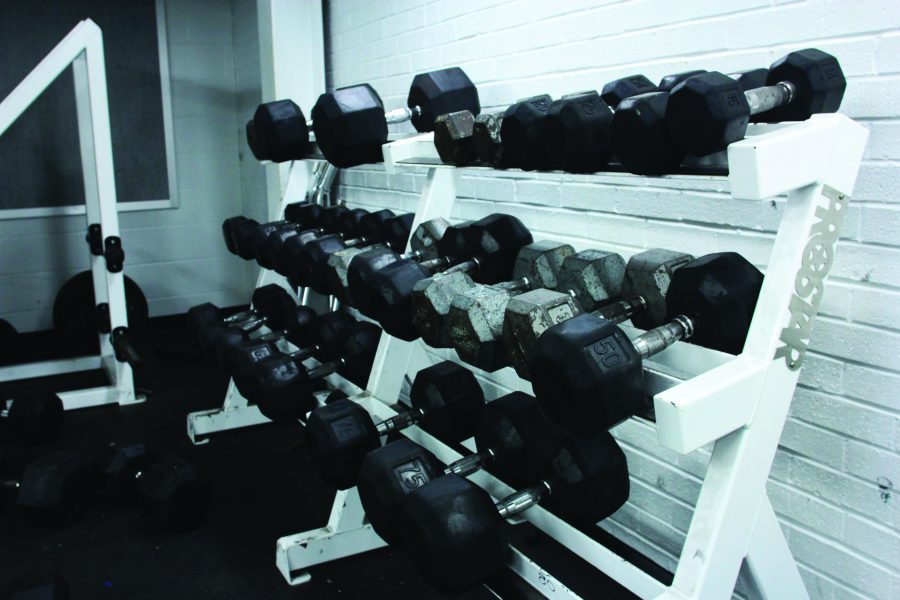Getting the sex talk is awkward in general, let alone hearing about it in a room full of classmates. Nonetheless, knowing how to have safe sex is crucial, especially since 41 percent of high school students reported having intercourse in a 2015 study conducted by the Resource Center for Adolescent Pregnancy Prevention.
But sex education is more than about preventing early pregnancy. One month ago the Centers for Disease Control and Prevention reported that STD rates at a “record high.” Syphilis rates increased by 18 percent from 2015 to 2016, while gonorrhea cases rose by 12.8 percent.
Some students say their health class lacked important information, however. One of those students is junior George Frey, who took health as a freshman in 2016. Frey said his health teacher, who no longer teaches at CPS, stressed the idea of abstinence when the topic of safe sex came up.
“[The teacher] said abstinence is the most effective way to prevent STDs, which it is, but he emphasized the idea of it a lot. I can see why, though; it’s weird to picture high school students having sex,” Frey said.“
However, we still should’ve been taught more about safe sex, rather than why abstinence is important. In reality, of course high school students will have sex, so it’s more important for them to learn about how to have safe sex more than it is to learn about abstinence.”
The Missouri General Assembly requires that all presented information related to human sexuality and STDs be medically accurate. Teachers must cite abstinence as the “preferred choice of behavior in relation to all sexual activity for unmarried pupils,” and teach that engaging in sexual activity as a teenager increases one’s risk of dropping out of school because of STDs and/or unplanned pregnancy.
Health teacher Wendy Sheehan said when it comes to teaching the sex education unit, her opinion on what the best method is doesn’t matter. The Columbia Public Schools (CPS) district and the state of Missouri, instead, set guidelines that she must follow.
“I work hard to address the topics and objectives set forth by these guidelines. On almost any topic taught in health education, you would find parents/guardians, students, perhaps even fellow teachers who vary greatly on what they believe should or shouldn’t be covered over the health education curriculum,” Sheehan said. “CPS and the State of Missouri make revisions to the guidelines periodically, and the health teachers adjust to meet the expectations of those changes.”
Junior Sara Kacem didn’t think the methods of protection and how to use them were taught as thoroughly as she would have hoped in her health class..
[quote]My teacher said if you’re going to have sex to use a condom, but some people don’t know how to put that on. I feel like [teachers] should demonstrate on a banana or something,” Kacem said. “Obviously kids are going to have sex in high school, but instead of saying that abstinence is the only way to not get a disease, maybe show us other ways and explain the other ways that you can have safe sex.[/quote]
CPS guidelines instruct health teachers to encourage open discussions and project-based assessments
Champagne Minx, a former RBHS health teacher, said. She said she did extensive research to ensure that she covered the sex education unit as thoroughly as possible and said the information she found largely supported teaching comprehensive sex education as opposed to abstinence only.
“I stress to my students that abstinence is the only way to avoid sexually transmitted infections and pregnancy, but that they should still be well-informed for when they do decide to become sexually active. Students talk about sex; TV, movies, music, online content and now even video games reference sex constantly,” said Minx, who noted that CPS guidelines require the curriculum to be inclusive toward all students, including those who identify as lesbian, gay, bisexual and transgender (LGBT). “Would it be better that students get all of their sex education from those outlets, where often blatant misogyny, homophobia and the no-strings-attached type mentality is glorified? Or should we talk frankly with students about relationships and the real-world consequences that they may face?”
Of course abstinence is the only sure-fire way to prevent pregnancy and the contraction of STDs, but for the nearly 50 percent of teens who will have had sex by the time they leave high school, the concept no longer holds any value. Even if some teens are not sexually active, statistics show that an abstinence-only curriculum is not the way to go. The National Campaign to Prevent Teen and Unplanned Pregnancy reported that Texas has the fifth highest teen pregnancy rate and the highest number of repeat pregnancies compared to the other states. In correlation, 58 percent of Texas school districts had an abstinence-only health curriculum for the 2015-2016 school year.
Junior Hannah Ollar said the tone of her health class made her feel pressured to remain abstinent. She said her teacher never mentioned condoms as a method of safe sex.
“[The teacher] brought up the fact that birth control doesn’t always work. He showed us different types of birth control, but then he was like, ‘You can just go by the date [of your menstrual cycle].’ Like, ‘I’m not ovulating this week, so it’s okay to have sex,’” said Ollar, who noted that her teacher did, however, go in depth about the danger of sexually transmitted diseases (STDs). “When I heard that, I thought, ‘That’s just not right.’ Since we were all freshman, I don’t think we really thought about how that didn’t make any sense at all.”
Students in Minx’s class received that extensive education, she said. She contacted Michelle Scheikles, the public health promotion supervisor at the Boone County Health Department, who provided materials for demonstrations on how to use condoms, as wells as pamphlets about STIs and other contraceptives. Although not everyone agrees with such explicit demonstrations, research shows that abstinence-based curriculums do not help decrease STD and pregnancy rates among adolescents.
Missouri law does not require school districts to teach sex education, but Ollar believes the education system should have some responsibility in making sure students don’t make a mistake that could affect the rest of their lives. She thinks parents should be involved and know whether or not their kids are sexually active but acknowledges that that’s not always the case.
“I think teachers should be there [when it comes to sex education], too, just to tell you how to protect yourself. Because you don’t want to have sex now, get an STD and ruin the rest of your life,” Ollar said. “If you get AIDs, you could die, so you wouldn’t want to get that in high school. You don’t want to be like, ‘Wow, I wish I had known how to protect myself before this happened, but no one ever taught me.’”
Do you think RBHS’s sex education is effective? Comment down below.
Categories:
Teachers vary approach to sex education
November 1, 2017

3
0
Tags:


















































































Melissa Carranza • Nov 9, 2017 at 7:01 pm
Personally in my class my health teacher was very flexible to the subject and he said “while abstinence is what the states wants us to promote, I still find it important to teach students alternatives and safe ways to have sex.”
Rachael Erickson • Nov 8, 2017 at 8:47 pm
All of my friends have had different experiences than each other and myself with the sex-ed courses in CPS. I think they should have another look at how they teach students how to protect themselves.
Amanda • Nov 7, 2017 at 9:23 pm
The writer of this article did a poor job in varying her sources. All of her student interviewees were juniors who took health several years ago. Even in the past few years, the sex education in Rock Bridge health classes has changed significantly. I took health this past summer at Rock Bridge and my experience was entirely different than the picture this author paints.